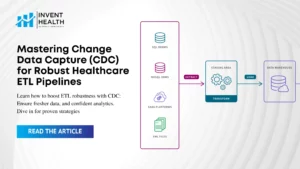CPDS Model Approach: CA Medical Program – Updates to CDPS Models 2023 and Beyond
DHCS has historically used the Medicaid Rx risk score grouper. Medicaid Rx was not refined enough to address risk selection differences observed in Medi-Cal Managed Care.
DHCS Medicaid payment systems will rely on the Chronic Illness and Disability Payment System risk models (CDPS, CDPS+RX) to risk adjust population costs. The primary purpose of risk adjustment is budget neutral (zero– than sum) mechanism to allocate capitated payments between contracted managed care organizations.
What’s Changing:
- DHCS is moving towards CDPS+Rx with concurrent weights in CY23.
- Performing risk adjustment using CDPS+Rx concurrent weights is a substantial improvement for local health plans.
- DHCS uses the county wide average (CWA) in conjunction with risk adjustment when multiple plans operate in the same region.
The Impacts:
Changes in Risk Models impact both health plans and Providers:
Managed care organizations that enroll and care for Medicaid populations require highly reliable risk adjustment and predictive modeling tools for population health assessments. Based on Invent Health analysis, we found that different risk models have variations in chronic conditions impacting Risk scores (CDPS vs HHS HCC) due to specificity of diagnostic conditions and how the models are developed and implemented.
The CDPS model is like HCC models used for Medicare HHS HCC model for ACA Line of business, but places greater emphasis on less common, more costly conditions that are more prevalent among disabled Medicaid beneficiaries.
CA Medicaid Medi-Cal Members are closely associated with CAL MEDICONNECT Exchange silver plan Members.
- 5000 Acute Conditions that are Risk impacting in CDPS do not Risk adjust in ACA Model
- 969 Diagnostic Conditions that Risk impact in ACA do not risk Impact in CDPS Model
The variation in different risk adjustment models mean, Providers need better alignment of reporting and effective outreach programs across all Lines of Business.
Risk adjustment operations have broader role to play in the MediCal program to ensure that the right provider and member outreach programs are set up, and that existing workflows are updated/refined to create actionable data and close care gaps.
1. MCO - Health Plans participating in CA MEDI-CAL Program
CCDPS+Rx model changes would introduce additional complexity for CA health plans to ensure that accurate medical (diagnosis codes) and pharmacy data are captured and reported based on the CDPS+RX model. Health plans need a more comprehensive process to report chronic health conditions yearly and ensure accuracy of the data like Medicare advantage and ACA models. For a 100K member plan, a 1 % adjustment of risk score due to CDPS+RX could potentially Impact $10-12 million dollars of annual revenue.
Health plans should analyze and benchmark current member population prevalence and provider performance in data reporting.
Health plans would need tools and technology that can support the following to prepare for the CDPS+Rx risk adjustment mandate:
- Replicating/Interpreting CDPS+Rx Risk adjustment model.
- Understand population historical prevenance rates based on CDPS+RX Model.
- Easy and consistent monitoring of population costs and initiative effectiveness.
- Patterns between population groupings and efficiency adjustment.
- Track High and Low utilizers across members with Chronic conditions.
- Analyze historical provider data and report patterns and areas of improvements for high and low risk populations.
- Prepare to analyze data impacting CDPS+RX weights and risk scores and identify opportunities for improvement for the next 12-18 months.
- Integrate CDPS+RX based opportunity reporting with existing programs or initiatives across quality, risk scores, concurrent and prospective coding, and the HEDIS program to become more efficient.
- Understand the differences of various risk adjustment models across lines of business and impacts to provider coding.
- Note that the similar chronic condition diagnosis codes that Risk adjusts in Medicare might not risk adjusting in Medicaid.
- Need proper documentation and updates to coding guidelines as per Medicaid CDPS Risk adjustment model.
- Refine suspected gap data and get clear alignment on what suspected gaps are being pushed on Priority.
- Embed clinical support to facilitate Provider documentation and education
- Reimburse quality of providers coding for performance-based payment model of care and or include in quality measures.
2. Providers - Provider Groups, Health Systems, PCP’s participating in CA MEDI-CAL Program
The goal of risk adjustment is to provide funding to health plans to take care of enrollees based on their health conditions. With adequate funding, health plans can offer many benefits to providers including financial incentives, outreach and education, and the development of programs to improve health outcomes.
Providers should become familiar with the principals of CDPS risk adjustment and the impact that it has on the health care system. Because CDPS risk adjustment is dependent on diagnosis coding and pharmacy data, it is very important that for all chronic illnesses, appropriate medications are documented each year as a face-to-face encounter.
- All diagnosis codes should be coded to the highest specificity and all encounters should be submitted to the health plan, even if the provider receives a monthly capitated payment.
- Plans must become familiar with standard coding principles for their specialty and make sure that all reported diagnosis codes are clearly supported in the medical record to protect from audits and potential fraud.
- Plans must embed clinical and administrative support for the CDPS risk model requirements and empower them with actionable data
- Plans must train coding and documentation teams on the impacts of the CDPS model and the nuances it carries across various risk adjustment requirements.
- Plans must leverage existing workflows or have flexible workflows for practitioners.
Author: Siva Tunga
Siva is a strategic leader, visionary, and an advocate of Invent Health’s MAP Platform. Over the past 19 years, Siva has led global teams in building and launching successful products in the spaces of risk adjustment, value-based care analytics, and workflows to manage encounter data. Siva is striving to create efficiency in risk adjustment and quality programs for all lines of business by implementing advanced analytics, reporting, and workflow engines.






